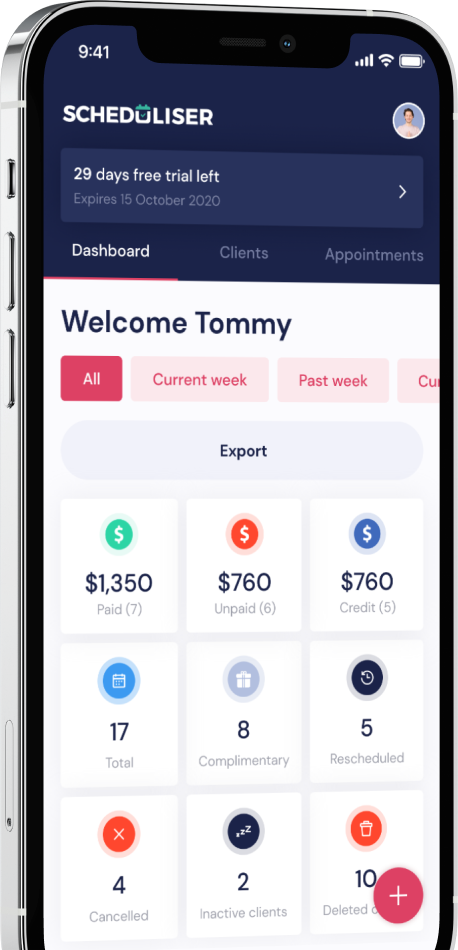Best practice for Personal Trainers

Most people choose a career in the health and fitness industry because they live a healthy life themselves and want to spread the joy of fitness to others. For this and many other reasons, it is critical that Personal Trainers provide a best-practice service because they are one of the important drivers of their client’s health and wellbeing and they can be the primary driver in helping them to live a healthier and more active life.
On the flipside of your client’s health and wellbeing is the undeniable risk of injury during a training session so in order to meet best practice you need to maximise your positive actions and minimise the risks to your clients and any negative impact on your business.
Becoming a best-practice operator
Successful Personal Trainers have a great client base and a good reputation within the industry. When you are starting out, it is important to create a framework that will set you up for future success. We have developed a range of tips to ensure you are following best practices.
1. Be clear on your client motivations
When you first sit down with a client, it is essential you determine why they have chosen you to be their Personal Trainer. Was it because of your reputation as a hard worker, was it because of your location, or was it your reasonable fees? Whatever reason they chose you, you have to ensure you live up to that reputation because they are not going to be satisfied if you don’t fulfill that requirement, or if you change your offer soon after they start.
Secondly, you have to be clear on why they want a Personal Trainer, whether it is for weight loss or building strength or muscle or flexibility. Whatever the reason, you have to design a program that will best suit their wants.
Thirdly you have to establish their motivation for the loss or the gain. Is it for an upcoming event, is it due to a change in lifestyle or circumstance or is it simply to hold off the aging process? Whatever reason is behind their want for a physical or mental change, you must address this at every stage of their training.
2. Take a holistic approach
We’ve talked about the importance of establishing motivations but it’s equally important to determine a client’s whole approach to health and fitness. Regardless of the effort in their training, unless they are eating well, it might be difficult to achieve their goals. Before you begin your client’s training and then at regular intervals throughout, you must check in with them about their lifestyle factors. Sleep, diet, stress, and lifestyle factors will all impact their health and while you can’t stop them from indulging in bad habits, you can encourage them to take a holistic view of their health and fitness.
3. Set your clients up for success
Most people have busy lives and will only succeed if their training sessions, lifestyle, and diet can be incorporated easily into their routine. It is your job therefore to work to their strengths and provides them with the means for positive change. Give them the tools and mindset for success. Help them by motivating them throughout their workout. Provide them with tips for success and encouragement for the positive changes they are making. You are an important role model for them and you can also provide forgiveness if they slip along the way.
4. Use technology to your advantage
You are running a business and like all businesses, you will benefit from technology that can maximise your return. Platforms like Scheduliser can provide SMS text or email reminders without costing anything extra. It can also help you to decrease your time spent on administration and reduce your no-shows. You determine how much notice your clients will require and the text or email will be automatically sent.
These tools can also schedule your clients within set windows which makes it easy to work around the times you want to work, and also if you have another job with hours during the day when you’re not available.
Additionally, a platform like Scheduliser can help with keeping track of your finances because it is critical to maximise your cash flow in order to be successful.
5. Plan for success but remain flexible
When we talk about flexibility, we don’t mean physically, but of course, that is going to help in the personal training profession. What we are talking about here is maintaining a flexible plan for success.
The old saying ‘if you fail to plan, you plan to fail’ definitely applies to a personal training business but we add the caveat of flexibility when you are creating your business plan. One difficult lesson COVID has taught us is that even the strongest plans don’t always work out. Our advice is to adjust the plan along the way, depending on how your business is growing. Again, keeping track of your various metrics like schedules, cash flow, profitability, and client retention will help you to see opportunities for growth and areas where you may need to make adjustments.
For more information on managing clients or growing your personal training business see the Scheduliser app.
Scheduliser helps you manage your PT clients in an easy-to-use platform with unlimited client capacity, auto appointment reminders, and cancelation notices, and in-built business insights to help you increase your return, grow your business and save valuable time and money.









